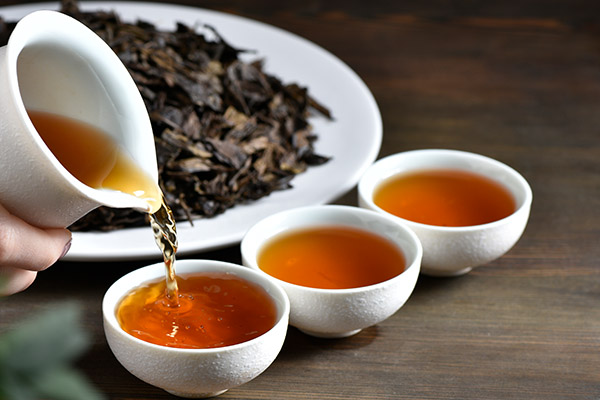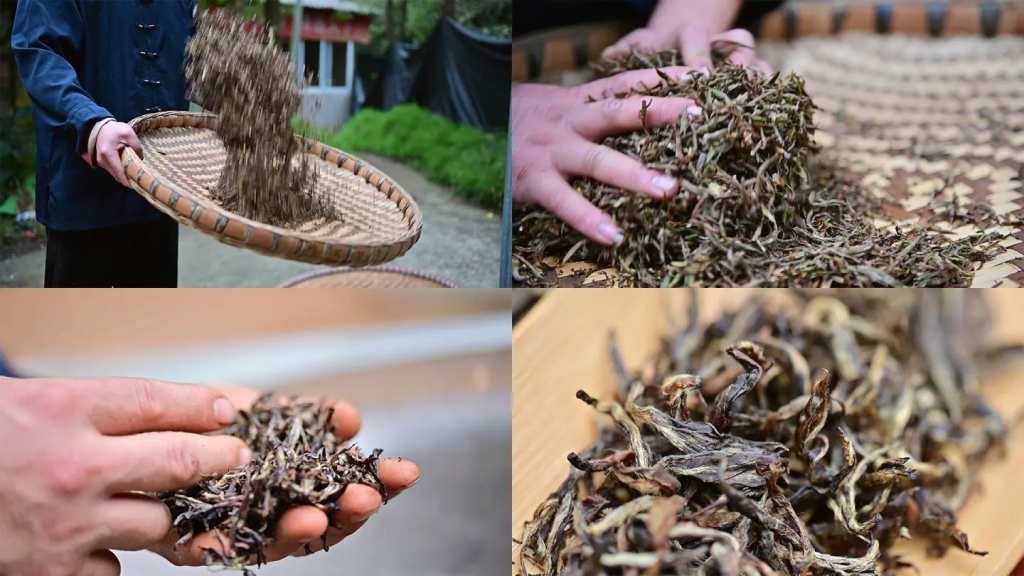In the mist-clad valleys of China’s Wuyi Mountains, a legend whispers through the ages—a tale of soldiers, serendipity, and the birth of a beverage that would enchant the world. This is the story of black tea, a humble leaf transformed by fire, time, and human curiosity into a liquid thread weaving through empires and everyday life.

The Accidental Alchemy of Wuyi
The year was 1644, and Ming Dynasty troops, fleeing the tumult of war, paused in the tea-growing region of Wuyi. Exhausted, they collapsed near a tea factory, their uniforms staining the withering leaves with sweat and oil. The factory’s owner, desperate to salvage his crop, hastily processed the leaves over pine fires. To his astonishment, the tea emerged not green but deep crimson, exuding a smoky, fruity aroma. What began as a soldier’s respite became the origin myth of Lapsang Souchong—the world’s first black tea.
This “smoked tea” intrigued Dutch traders, who encountered it in Fujian’s ports. Recognizing its resilience for long voyages, they shipped it to Amsterdam, where it became a curiosity in coffeehouses. Yet black tea’s true transformation occurred not in China, but in the crucible of British colonial ambition.
From Canton to Calcutta: The Birth of an Empire
By the 18th century, Britain’s East India Company sought to break China’s monopoly on tea. Enter Robert Fortune, a Scottish botanist dispatched in 1848 to “steal” tea secrets. Disguised as a Chinese merchant, he smuggled seedlings and skilled workers from Wuyi to the Himalayan foothills. India’s Assam and Darjeeling plantations soon rivaled China’s, their robust teas tailored for blending with milk—a British predilection.
The “Tea Wars” of the 19th century saw China’s refusal to trade opium for tea, culminating in the Opium Wars. But it was India’s production that democratized black tea, making it a staple of global trade and colonial economies.
A Royal Sip and a National Obsession
Black tea’s ascent in Britain was sealed by a queen’s whim. In 1662, Portugal’s Catherine of Braganza married Charles II, bringing with her a chest of tea as part of her dowry. Her habit of adding milk and sugar to bitter Chinese brews popularized “afternoon tea,” a ritual that transcended class. By the 1800s, Anna, Duchess of Bedford, codified this tradition, inviting friends to tea and cakes to ward off “that sinking feeling” before dinner.
The Industrial Revolution further entrenched tea’s dominance. Tea breaks fueled factory workers, and the “tea penny” became a cherished wage portion. By 1900, Britain imported over 200 million pounds annually, its empire’s reach mirrored in teacups worldwide.
From Empire to Everyday: The Modern Tapestry
Today, black tea’s journey continues in unexpected ways. In Sri Lanka, former Ceylon, tea pluckers’ songs echo across hillsides, their labor producing brisk, amber brews. In Russia, zavarka—a samovar-steeped concentrate—sustains winters. Even in China, where black tea was once a regional curiosity, Yunnan’s Dian Hong and Qiimen’s Keemun now compete globally.
Yet the story remains rooted in Wuyi’s legend. Each time we steep a leaf, we participate in a ritual older than nations—one that bridges war and peace, tradition and innovation. Black tea’s history is not merely a chronicle of commerce; it is a testament to humanity’s ability to find connection in a cup.
So next time you raise a porcelain saucer to your lips, remember the soldiers’ sweat, the botanist’s subterfuge, and the queen’s sweet tooth. For in that crimson liquid, you hold a world transformed, one sip at a time.



